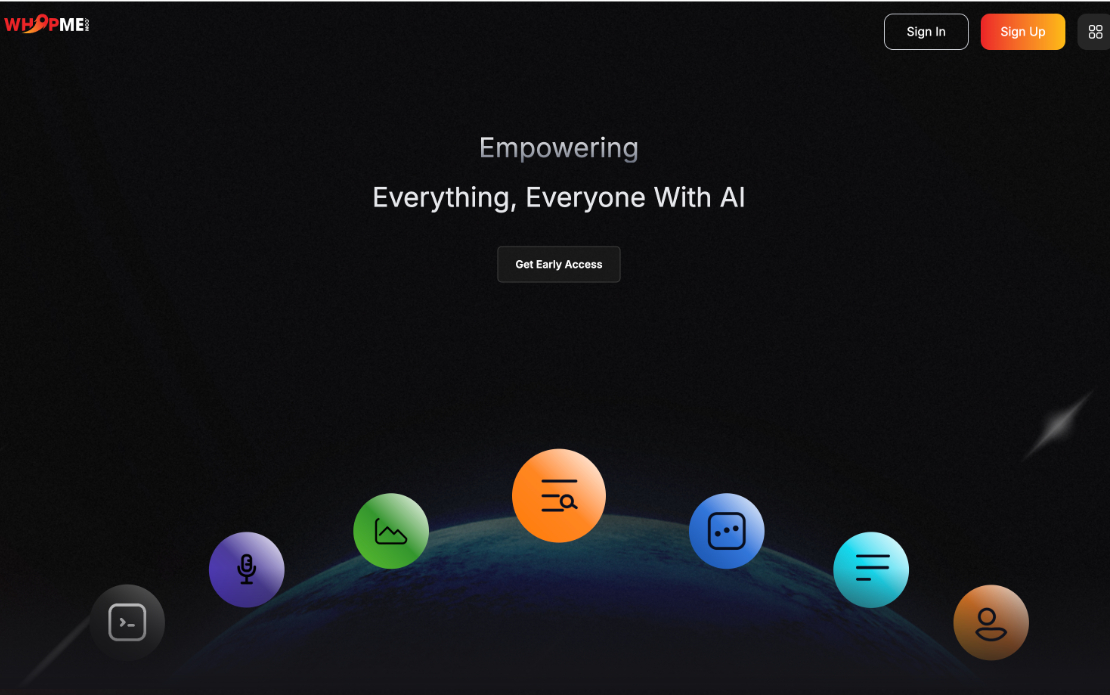
Challenge
1. Technical Complexity
Integration of diverse AI technologies (ML, NLP, CV) within a single platform
Ensuring seamless communication between different AI modules
Managing varying computational requirements for different AI services
Maintaining consistent performance across different scales of operation
2. User Experience
Simplifying complex AI operations for non-technical users
Creating an intuitive interface that doesn't sacrifice functionality
Balancing automation with customization options
Providing meaningful feedback for AI operations
3. Scalability
Handling varying workloads across different customer sizes
Managing resource allocation efficiently
Ensuring consistent performance during peak usage
Maintaining data integrity across distributed systems
4. Data Management
Securing sensitive customer data during model training
Implementing efficient data preprocessing pipelines
Managing data versioning for model iterations
Ensuring compliance with data protection regulations
5. Integration Complexity
Supporting various API protocols and data formats
Maintaining compatibility with legacy systems
Ensuring real-time synchronization across integrated platforms
Managing API version control and updates
1. Technical Complexity
Integration of diverse AI technologies (ML, NLP, CV) within a single platform
Ensuring seamless communication between different AI modules
Managing varying computational requirements for different AI services
Maintaining consistent performance across different scales of operation
2. User Experience
Simplifying complex AI operations for non-technical users
Creating an intuitive interface that doesn't sacrifice functionality
Balancing automation with customization options
Providing meaningful feedback for AI operations
3. Scalability
Handling varying workloads across different customer sizes
Managing resource allocation efficiently
Ensuring consistent performance during peak usage
Maintaining data integrity across distributed systems
4. Data Management
Securing sensitive customer data during model training
Implementing efficient data preprocessing pipelines
Managing data versioning for model iterations
Ensuring compliance with data protection regulations
5. Integration Complexity
Supporting various API protocols and data formats
Maintaining compatibility with legacy systems
Ensuring real-time synchronization across integrated platforms
Managing API version control and updates
Solution
1. Technical Architecture
Implemented microservices architecture for modular AI services
Developed containerized deployments for consistent environment management
Created service mesh for efficient inter-service communication
Utilized auto-scaling clusters for resource optimization
2. User Interface Design
Designed visual workflow builder with drag-and-drop functionality
Implemented progressive disclosure of advanced features
Created interactive tutorials and contextual help systems
Developed real-time preview capabilities for AI operations
3. Scalability Implementation
Deployed kubernetes-based orchestration for dynamic scaling
Implemented distributed caching for improved performance
Created load balancing systems for optimal resource distribution
Developed automated backup and recovery systems
4. Data Security and Management
Implemented end-to-end encryption for data protection
Created automated data validation and cleaning pipelines
Developed versioning system for datasets and models
Implemented role-based access control (RBAC)
5. Integration Framework
Developed standardized API connectors for common platforms
Created automated API documentation generation
Implemented webhook support for real-time updates
Developed API rate limiting and monitoring systems
1. Technical Architecture
Implemented microservices architecture for modular AI services
Developed containerized deployments for consistent environment management
Created service mesh for efficient inter-service communication
Utilized auto-scaling clusters for resource optimization
2. User Interface Design
Designed visual workflow builder with drag-and-drop functionality
Implemented progressive disclosure of advanced features
Created interactive tutorials and contextual help systems
Developed real-time preview capabilities for AI operations
3. Scalability Implementation
Deployed kubernetes-based orchestration for dynamic scaling
Implemented distributed caching for improved performance
Created load balancing systems for optimal resource distribution
Developed automated backup and recovery systems
4. Data Security and Management
Implemented end-to-end encryption for data protection
Created automated data validation and cleaning pipelines
Developed versioning system for datasets and models
Implemented role-based access control (RBAC)
5. Integration Framework
Developed standardized API connectors for common platforms
Created automated API documentation generation
Implemented webhook support for real-time updates
Developed API rate limiting and monitoring systems
Results
1.Performance Metrics
99.9% platform uptime achieved
40% reduction in AI model deployment time
60% decrease in required technical support tickets
3x improvement in model training efficiency
2. User Adoption
85% user satisfaction rate
70% reduction in onboarding time
90% of users successfully deployed their first AI model within 24 hours
50% increase in user retention rate
3. Technical Achievement
Successfully processed 1M+ API requests daily
Achieved sub-second response times for 95% of API calls
Maintained data consistency across 99.99% of operations
Reduced infrastructure costs by 35%
4. Business Impact
Enabled 200+ companies to implement AI solutions
Reduced time-to-market for AI projects by 65%
Achieved 45% cost savings compared to traditional AI implementation
Processed over 10PB of training data successfully
5. Security and Compliance
Zero security breaches reported
100% compliance with GDPR and CCPA requirements
Successfully completed SOC 2 Type II certification
Maintained 99.99% data integrity across all operations
1.Performance Metrics
99.9% platform uptime achieved
40% reduction in AI model deployment time
60% decrease in required technical support tickets
3x improvement in model training efficiency
2. User Adoption
85% user satisfaction rate
70% reduction in onboarding time
90% of users successfully deployed their first AI model within 24 hours
50% increase in user retention rate
3. Technical Achievement
Successfully processed 1M+ API requests daily
Achieved sub-second response times for 95% of API calls
Maintained data consistency across 99.99% of operations
Reduced infrastructure costs by 35%
4. Business Impact
Enabled 200+ companies to implement AI solutions
Reduced time-to-market for AI projects by 65%
Achieved 45% cost savings compared to traditional AI implementation
Processed over 10PB of training data successfully
5. Security and Compliance
Zero security breaches reported
100% compliance with GDPR and CCPA requirements
Successfully completed SOC 2 Type II certification
Maintained 99.99% data integrity across all operations
